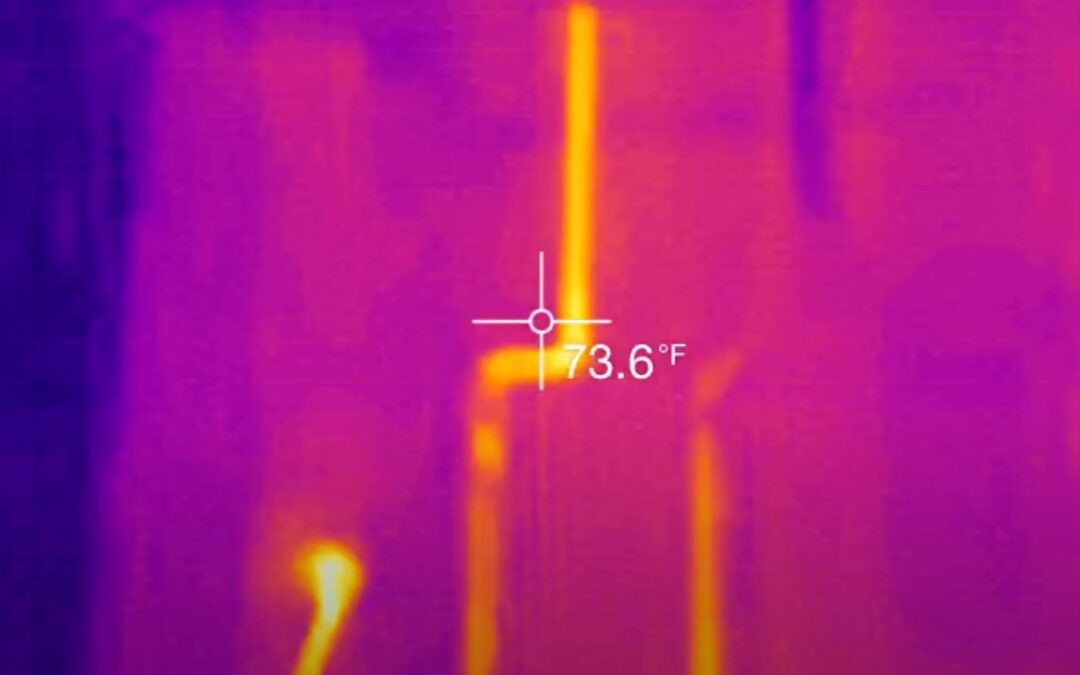The Art of Detecting Hidden Lines Behind Walls
Initial Clues for Electrical and Plumbing Lines
Whether renovating an art deco gem in Carlton or updating a contemporary townhouse in Richmond, the presence of unseen electrical and plumbing lines behind walls can be a challenge. Here are some signs to guide your initial search:
- Outlets & Switches: These are usually fixed to electrical boxes in the wall. Tracing vertically from these points can give a hint of the direction of the electrical lines.
- Fixtures: Places where fixtures like faucets or light fittings emerge are clear indicators of hidden plumbing or electrical lines.
- Wall “Sounds”: When tapped, a hollow sound might indicate spaces between studs, which often house electrical or plumbing lines.
Using Tools and Technology
Stud Finders:
These hand-held devices detect changes in wall density. Modern stud finders come with modes to specifically detect electrical or metallic materials behind walls.
Endoscopic Cameras:
Also known as inspection cameras, these devices consist of a camera on the end of a flexible rod. A small hole is made in the wall, and the camera provides a visual of what’s behind.
Thermal Imaging Cameras:
Heat from live electrical circuits or warm water pipes can be detected using these cameras. They display temperature variations on walls, pinpointing potential hidden lines.
Acoustic Pipe Locators:
These detect the noise made by water moving through pipes, helping to trace the path of plumbing lines behind walls.
Safety Precautions
- Turn Off Power: Before making any holes or starting investigative work, always turn off the electricity in the concerned area.
- Use Insulated Tools: When probing for electrical lines, use insulated tools to prevent potential shocks.
- Avoid Water Sources: When trying to detect electrical lines, stay away from water sources to minimise risk.
- Wear Protective Gear: Use safety glasses and gloves when drilling or cutting into walls.
Special Considerations for Melbourne
Melbourne’s diverse architectural heritage means a myriad of construction techniques have been employed over the years. In older buildings, electrical and plumbing lines may not follow the modern conventions, so extra care is required.
Comparative Table: Tools & Techniques for Detecting Hidden Lines
| Method | Advantages | Disadvantages | Best Used For |
| Stud Finders | Non-invasive, easy to use | May not detect deeper lines | General detection of lines & studs |
| Endoscopic Cameras | Provides visual evidence | Invasive (requires hole in wall) | Detailed inspections behind walls |
| Thermal Imaging | Detects temperature variations | Can’t detect cold pipes or turned-off lines | Locating live electrical lines |
| Acoustic Pipe Locators | Specifically for plumbing | Ambient noise can interfere | Tracing water pipes |
While DIY methods have their place, when it comes to the intricate task of accurately detecting lines in walls, especially in the concrete domains, expertise stands out. For precision and safety, engaging the services of professional concrete wall cutters, like Bullseye Concrete Cutting Melbourne, can make a world of difference, ensuring that Melbourne’s beloved buildings remain both beautiful and structurally sound.
FAQs on Detecting Hidden Electrical and Plumbing Lines
How accurate are stud finders in locating electrical lines?
While stud finders can be efficient in identifying studs and metal, their accuracy for electrical lines can vary. It’s essential to use a quality device and follow the manufacturer’s instructions.
Can I rely solely on the location of outlets and switches to determine the path of electrical lines?
Outlets and switches provide initial clues, but the actual path might deviate. Relying solely on them can lead to misjudgments.
What’s the risk of drilling into a wall without checking for hidden lines?
Drilling blindly can lead to electric shocks, water leaks, or even structural damage, resulting in costly repairs and potential health hazards.
Is the use of an endoscopic camera invasive?
Yes, an endoscopic camera requires a small hole to be made in the wall for inspection, making it a slightly invasive method.
How deep can thermal imaging cameras detect?
Their depth range varies, but most can detect temperature variations up to a depth of approximately 10 to 20 centimetres.
Are there specific times when acoustic pipe locators might not be effective?
Acoustic locators depend on the noise of water. If pipes are not in use, or there’s too much ambient noise, detection might be challenging.
How safe is it to cut into concrete walls?
Cutting concrete walls requires expertise, especially when unsure about hidden lines. It’s recommended to engage professionals like Bullseye Concrete Cutting Melbourne for such tasks.
Do older Melbourne homes pose more challenges in detecting hidden lines?
Given the diverse architectural heritage and varied construction techniques over the years, older Melbourne homes might not always follow modern conventions, making detection trickier.
Can I use a regular camera instead of an endoscopic one?
Endoscopic cameras are designed for tight spaces and provide lighting in dark areas behind walls. Regular cameras are not suitable for this purpose.
How do I ensure my safety when trying to locate hidden lines?
Always turn off the electricity in the area of work, use insulated tools, stay away from water sources, and wear protective gear.
Do all hidden lines run vertically behind walls?
Not necessarily. While many run vertically from outlets or switches, some might run horizontally, especially in more complex setups.
Are there any non-invasive techniques that provide a 100% guarantee of detection?
No single method guarantees 100% detection without some level of invasiveness. Combining multiple techniques increases accuracy and reduces risks.

